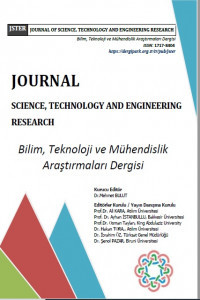Infusing Energy Efficient Illumination Design to retrofit existing infrastructures – A case of efficient illumination design of Multipurpose Hall at Jigme Namgyel Engineering College
Illumination design, Energy Efficient Lighting, Natural Lighting, Problem Based Learning, Multipurpose Hall
Infusing Energy Efficient Illumination Design to Retrofit Existing Infrastructures - A case of energy efficient illumination design of Multipurpose Hall at Jigme Namgyel Engineering College
Illumination design, Energy Efficient Lighting, Natural Lighting, Problem Based Learning, Multipurpose Hall,
___
- [1] Costanzo, V., Evola, G., & Marletta, L. (2017). A review of Daylighting strategies in schools: State of the art and expected future trends. Buildings, 7(4), 41. https://doi.org/10.3390/buildings7020041
- [2] Yangzom, K., Bhattarai, H., Choki, S., Choden, P., & Yangden, S. (2021). Energy efficient lighting design - A case study of jigme namgyel engineering college. Journal of Applied Engineering, Technology and Management, 1(1), 14-21. https://doi.org/10.54417/jaetm.v1i1.20
- [3] Zhao, G. (2020). The influence of natural light on the design of electrical lighting -taking Liaohe art Museum as an example. Journal of Physics: Conference Series, 1601(2), 022009. https://doi.org/10.1088/1742-6596/1601/2/022009
- [4] ITeh standards. (2011). iTeh Standards. https://standards.iteh.ai/catalog/standards/cen/d7c62c9a-95ac-4ed8-9a40-862805aa5afc/en-12665-2011
- [5] Preto, S. (2019). Dynamic facades: Optimization of natural light at workplaces. Advances in Intelligent Systems and Computing, 392-402. https://doi.org/10.1007/978-3-030-20151-7_37
- [6] Jamala, N., Rahim, R., & Mulyadi, R. (2019). Analysis of natural light distribution in the building. IOP Conference Series: Materials Science and Engineering, 619(1), 012024. https://doi.org/10.1088/1757-899x/619/1/012024
- [7] Schmal, C., Herzel, H., & Myung, J. (2020). Clocks in the wild: Entrainment to natural light. Frontiers in Physiology, 11. https://doi.org/10.3389/fphys.2020.00272
- [8] Balocco, C., Cecchi, M., & Volante, G. (2019). Natural lighting for sustainability of cultural heritage refurbishment. Sustainability, 11(18), 4842. https://doi.org/10.3390/su11184842
- [9] MoWHS, RGoB. (2013). Bhutan Green Building Design Guidelines. Ministry of Work and Human Settlement. https://www.mowhs.gov.bt/wp-content/uploads/2014/05/Bhutan-GREEN-Building-Design-Guidelines-PDF-for-website-FI.pdf
- [10] Thompson, A. D. (2006). The worth of natural light. Journal of Building Appraisal, 2(1), 44-51. https://doi.org/10.1057/palgrave.jba.2940037
- [11] BREEM. (2011). Hea 01, Visual Comfort. https://www.breeam.com/BREEAMUK2014SchemeDocument/content/05_health/hea01_nc.htm
- [12] Michael, A., & Heracleous, C. (2017). Assessment of natural lighting performance and visual comfort of educational architecture in Southern Europe: The case of typical educational school premises in Cyprus. Energy and Buildings, 140, 443-457. https://doi.org/10.1016/j.enbuild.2016.12.087
- Başlangıç: 2020
- Yayıncı: Mehmet BULUT
Öz yinelemeli sinirsel ağların sinirsel atım verilerinden yararlanılarak modellenmesi hakkında
Covid-19 Virüsü Salgını İle Mücadelede Büyük Veri Çalışmaları: Çin Örneği
Contemplation of the Photonics Beam to Complement the Water Cycle in Gulf Region
Imadeldin ELMUTASİM, Izzeldin I. MOHD, Khalid Hamid BİLAL
Değişken Önemini Değerlendirmeye Dayalı Makine Öğrenme Algoritmalarının Karşılaştırmalı Analizi
Endüstriyel Robot Hareket Planlama Algoritmaları Performans Karşılaştırması
Windows Gömülü Bilgisayar üzerinde Petrol Sondaj Kulesi için Endüstriyel İletişim Güvenirliliği
Ongun YUCESAN, Altan ÖZKİL, Efe ÖZBEK
Dense Evrişimsel Ağ Kullanarak Kan Hücresi Görüntülerinden Kan Hücrelerinin Sınıflandırılması
